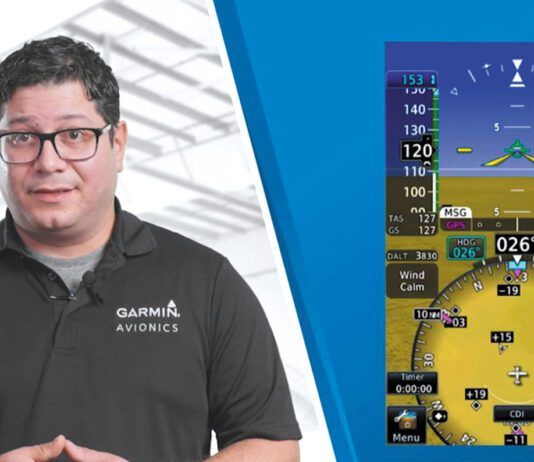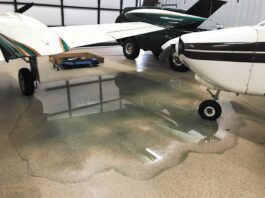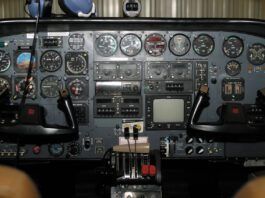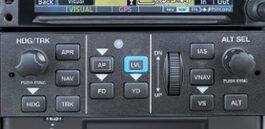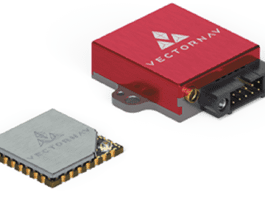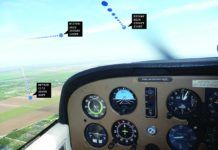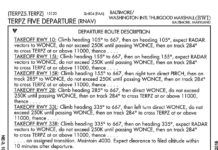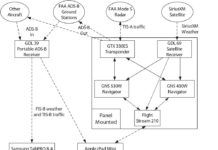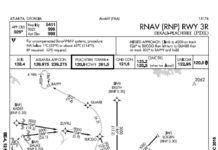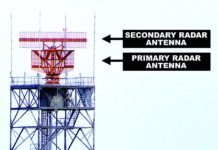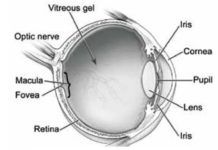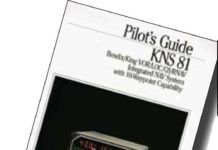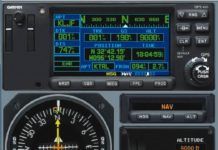Understanding Air Traffic
Many air traffic control procedures can seem complex at times, but most are based on simple concepts. Take traffic calls, for instance. Theyre driven by basic self-preservation. If a controller can get a pilot to see another nearby aircraft, that pilot should avoid the other aircraft and make the controllers job easier and the skies safer-common sense in action.
February 2016
For years Ive been suggesting to NACO to stop using nonsense five-letter identifiers that were impossible to pronounce and usually led to confusion in actual IMC, and replace them with numerical identifiers. I read Decembers Need a Sim Instructor? with great interest because I have a FlyThisSim TouchTrainer BATD with a current LOA. BWI was recently clearing departures to fly the TERPZ FIVE from Runway 15R. The plan view of the procedure has the notation in the top-right corner of the first page: Top Altitude 4000.
Garmin Flight Stream
Like many active pilots, Ive enthusiastically embraced the transition to digital technology in the cockpit. The panel in our V35B Bonanza is well equipped for instrument flight, with Garmin navigators and an Aspen Evolution EFD1000 Pro primary flight display. But, I also wanted to add ADS-B traffic and weather information, and a way to carry instrument charts electronically without compromising safety.
Accidents, Drones, NASA Aircraft and More
The NTSB says general aviations loss-of-control accident rate is too high, and held a day-long Humans and Hardware forum on the issue in October, in Washington, D.C. As the FAA worked last year to develop new rules governing the use of small drones in the National Airspace System, a Google executive said the company plans to launch commercial drone home deliveries in 2017. NBAA called its 2015 convention, held in November in Las Vegas, enormously successful on a business and community level. A group of NASA engineers and private-sector partners working in California is creating an X-Plane demonstrator, based on a Tecnam 2006T, that they hope will prove the efficiency of using an array of small electric-powered propellers for general aviation aircraft. The nonprofit group working to get the B-29 Doc back in the air exceeded their Kickstarter goal, raising $159,151 from 1,007 backers, and said they now have the funds they need to complete the flight-test program. And Jet Pack Aviation, of Australia, introduced its lightweight jetpack with a flyby of the Statue of Liberty.
Readback: January 2016
IFR reader feedback from January's issue. Covers ICAO flight plans, Class D airspace handoffs, TSO requirements, and runway approach authorization.
January 2016
On a musical note and for enjoyment of all the Parrotheads, Palm Beach International Airport (KPBI) recognizes avid pilot and aircraft owner Jimmy Buffett in the BUFIT ONE RNAV DEPARTURE which has waypoints JIMEY and BUFIT. Luca F Bencini-TiboWeston, FL Flying IFR southbound from a private airstrip near Sudbury, Ontario, I had the following exchange with Center: …
Radar Contact: Dealing with Air Traffic Control Without A Transponder
There are two types of radar used in air traffic control: primary and secondary. Primary is commonly referred to as skin paint. Radio waves shoot out from a rotating radar antenna, bounce off the skin of whatever they hit, and return to the antenna. These only determine a targets location via its range and bearing from the antenna. The distance that location changes in the time between antenna sweeps is used to calculate its speed.
Sight and Vision
The FAAs Pilots Handbook of Aeronautical Knowledge is clear; Of all the senses, vision is the most important for safe flight. This statement is particularly true for instrument flying where sight must often overpower conflicting cues from our other senses. Over the years, weve likely forgotten the little bit we learned about vision in our initial pilot training. Lets review the basics of vision and explore what happens as we age. Finally, well look at what happens when vision goes awry at night in IMC.
Gettin’ in the Door
Many groups tour our control tower and radar room every month. Well host everything from students with instructors, to airline, military and law-enforcement pilots.
Howd We Get So Lazy?
RNAV as an IFR navigator has come a long way. Early systems had a user interface little more complicated than tuning a radio. You tuned the navaid, then provided an offset of radial and distance and that phantom waypoint became a fix against which you could navigate. Those systems werent particularly sophisticated and required that we continue to maintain situational awareness. It was nice to read a bearing and distance in digital numbers and pinpoint your position on the (paper) chart, but that was about it.
GPS Makes Us Lazy
Face it: We love our GPS. Many of us fly with two of em installed, plus a portable for good measure. Its arguably the most revolutionary advance in navigation, automation and IFR capabilities. Satellites now allow the most basic aircraft to navigate with amazing precision.However, there are caveats for modern RNAV pilots. Weve become overly dependent on GPS when it comes to the cornerstone of IFR navigation-situational awareness (SA). That means many of us are losing touch with the basic skill of knowing where we are in our heads, not just on the moving map. Also, like any piece of equipment, we need to use GPS as a tool, not a crutch, especially when a trip changes drastically due to weather, systems malfunctions, and the like.
The Ultimate in CRM
The best way to think about cockpit resource management is to use flows and checklists. But with multiple GPS units on board, CRM has become a bit cluttered, mainly because standard checklists dont incorporate all the extra stuff we use.

